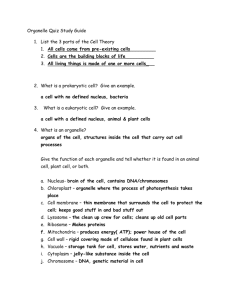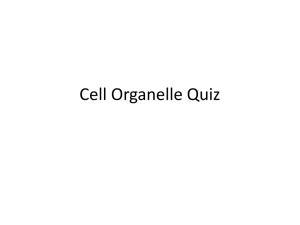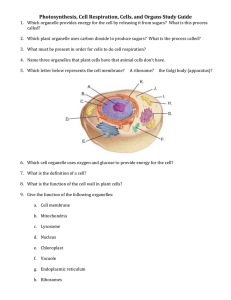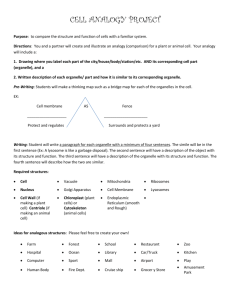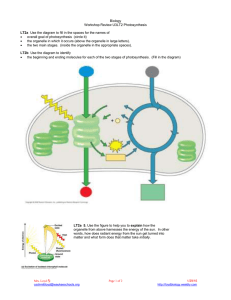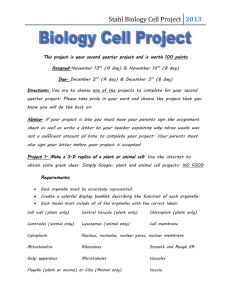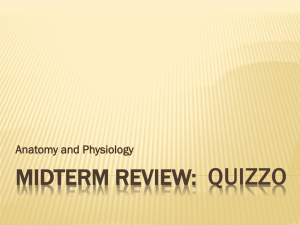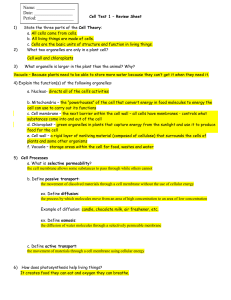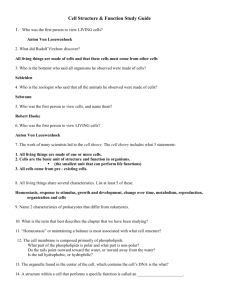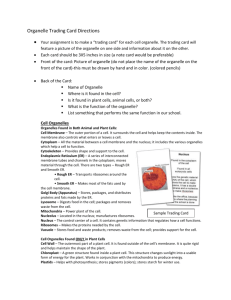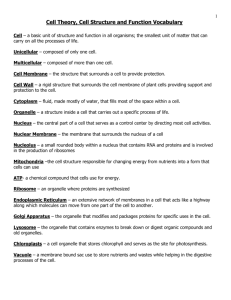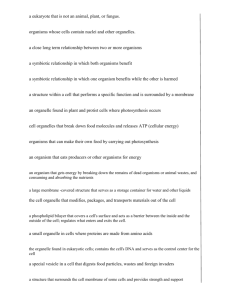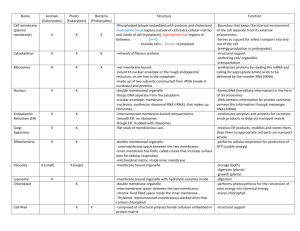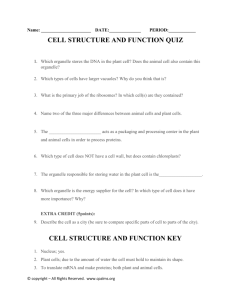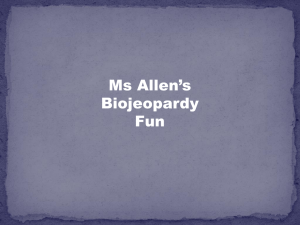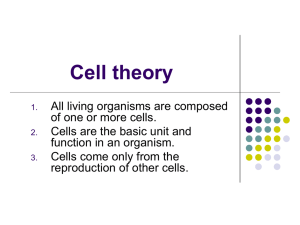bioMidtermQ1 on SOLS REVIEWsheetKEY
advertisement
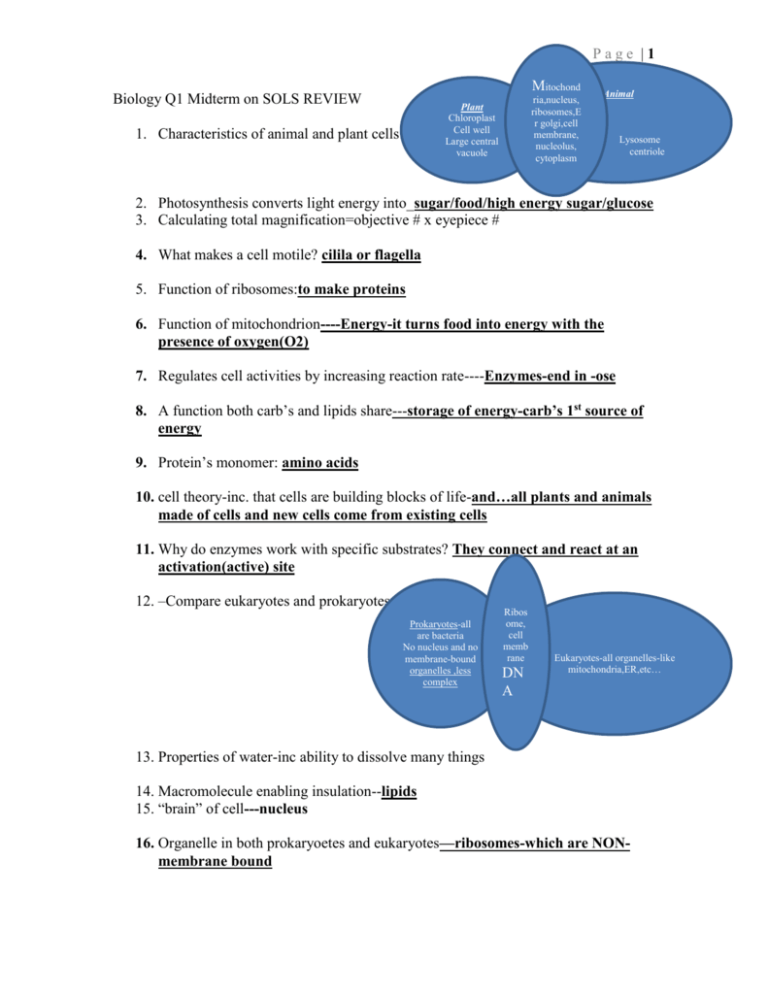
Page |1 Mitochond Biology Q1 Midterm on SOLS REVIEW ria,nucleus, ribosomes,E r golgi,cell membrane, nucleolus, cytoplasm Plant Chloroplast Cell well Large central vacuole 1. Characteristics of animal and plant cells Animal Lysosome centriole 2. Photosynthesis converts light energy into_sugar/food/high energy sugar/glucose 3. Calculating total magnification=objective # x eyepiece # 4. What makes a cell motile? cilila or flagella 5. Function of ribosomes:to make proteins 6. Function of mitochondrion----Energy-it turns food into energy with the presence of oxygen(O2) 7. Regulates cell activities by increasing reaction rate----Enzymes-end in -ose 8. A function both carb’s and lipids share---storage of energy-carb’s 1st source of energy 9. Protein’s monomer: amino acids 10. cell theory-inc. that cells are building blocks of life-and…all plants and animals made of cells and new cells come from existing cells 11. Why do enzymes work with specific substrates? They connect and react at an activation(active) site 12. –Compare eukaryotes and prokaryotes: Prokaryotes-all are bacteria No nucleus and no membrane-bound organelles ,less complex Ribos ome, cell memb rane DN A Eukaryotes-all organelles-like mitochondria,ER,etc… 13. Properties of water-inc ability to dissolve many things 14. Macromolecule enabling insulation--lipids 15. “brain” of cell---nucleus 16. Organelle in both prokaryoetes and eukaryotes—ribosomes-which are NONmembrane bound Page |2 17. Which organelle should a muscle cell have plenty of---mitochondria 18. Organelles of photosynthesis and cellular respiration:________________________________ 19. Explain homeostasis:--internal balance necessary for organisms—like temp.,pH,etc…. 20. Autotrophs v, heterotrophs—Autotrophs(plants and algae main examplesz) make their own food and heterotrophs don’t(animals-inc. humans,fungi,most protists most bacteria) 21. Cell 1st defense-----cell membrane 22. benefit of ice floating on a winter lake---prevents it from freezing solid 23. reason one molecule will diffuse easier than another:smaller size slips through membrane easier 24. Compare diffusion/osmosis in hypertonic---water out/cell size shrinks,hypotonic –water in and size increases and isotonic—water comes in and out evenly and size stays the same 25. Type of molecule that move larger molecules through cell membrane---channel)protein 26. Remember that photosynthesis and cellular respiration are basically opposite ---the reactants for one are the products of another and vice-verse 27. Enzymes speed up reactions and therefore control cell activities 28. Organelle of photosynthesis-chloroplast/organelle of making energymitochondria 29. Know that knowledge of cells would not have happened w/ microscopes and work of Von Leewehoeck/Hooke
